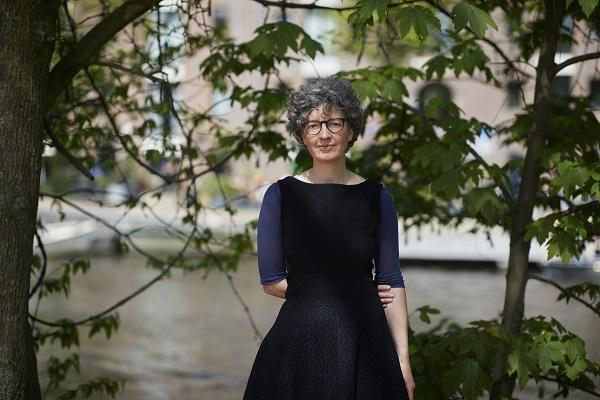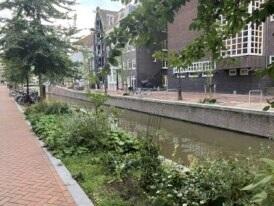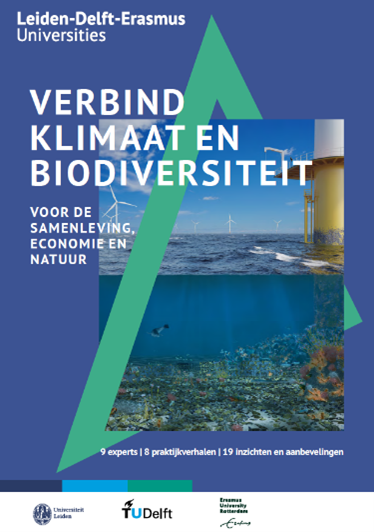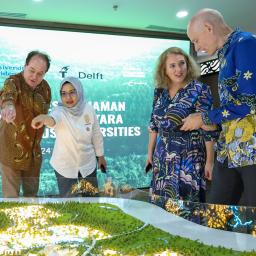 Greening post-war residential neighbourhoods produces the biggest urban climate and biodiversity gains. Urban planner Tess Broekmans: “Making a neighbourhood compact, increasing population density, can actually make it more liveable.”
Greening post-war residential neighbourhoods produces the biggest urban climate and biodiversity gains. Urban planner Tess Broekmans: “Making a neighbourhood compact, increasing population density, can actually make it more liveable.”
By Rianne Lindhout
Has urban planning gone green over the past few decades?
“Climate resilience has only become a major consideration in design in the past 5 to 10 years. Urban planning is a slow field. The projects being implemented now were usually designed 10 years ago. While we used to pride ourselves on gorgeous details and striking clinkers, we’re now trying to make streets truly green. Perennials in public spaces are the new trend, with Ton Muller being one of the first in the country to feature them in his design for Orlyplein near Amsterdam's Sloterdijk station. Green spaces improve water retention and lower the temperature.”
My biggest frustration is probably seeing how much money is spent on the wrong things.'
Do we know how to create a climate-proof yet biodiverse neighbourhood?
“To get it right, you need to involve everyone - all the different experts - from the get-go, including people like an ecologist, a water board rep and a civil engineer to fit in all the pipes and cables. Greenspace standards are also becoming more common, in order to prevent other urban functions from swallowing up all the space. Take Cecil Konijnendijk's 3-30-300 rule, for example: everyone should be able to see three trees from home, 30% of the neighbourhood should be covered by tree crowns for shade, and every house should be no more than 300 metres from a green space.”
 Are green space standards the solution for improving urban biodiversity?
Are green space standards the solution for improving urban biodiversity?
“It’s best to see the standards as a way to level the playing field between the different stakeholders involved in urban planning. There’s also sports standards, for instance, and it is impossible to meet every single standard out there. Ultimately, the principal decides, which means the municipality has to choose. Many municipalities do have policies for incorporating nature-friendly elements in buildings, such as nest boxes and special roof tiles, and while I’m unsure about their overall effectiveness, they are relatively cheap and have a small footprint. Green façades, on the other hand, are particularly high-maintenance, as the plants have to be carefully selected based on sunlight exposure. If you ask me, façade gardens and green façades are a more promising way forward.”
What’s the main hurdle standing in the way of lush, verdant neighbourhoods?
“Developers tend to look at the figures: how many homes do we need and how many parking spaces? Parking spaces for cars take up a vast amount of our space. Water is usually given enough space, because there are hard standards for water storage, but there’s hardly any space for softer ecological values such as natural banks with highly biodiverse wetland areas. Underground car parks are a good space saver, but planting trees on top of parking structures is difficult and the projects cost a pretty penny. That’s probably my biggest frustration: seeing how much money is spent on the wrong things.”
How can we get out of this impasse?
“In areas with low parking standards - 0.3 parking spaces per home rather than the usual 1.3 - there is money and space. This transition is currently taking place in inner cities, like the city centre of Delft, where public transport and amenities are usually at walking distance. Small municipalities have less money for large investments in public space and also lack specialist knowledge. Amsterdam has developed a comprehensive design method for public space , which anyone can consult.”
The residents of a new housing estate near me in Hoofddorp have been incentivised to use shared cars. Where should people leave their sacred cow? “It may feel counterintuitive, but one way to improve liveability is to use the available space to make neighbourhoods more compact, creating denser residential areas. What’s more, lots of homes only have single occupants instead of four, for example, so splitting homes may also be a solution. If there are enough users, bus stops and bakeries will return. What’s more, you don’t need as many cars in a 15-minute city with nearby amenities.”
Residents of redesigned streets, in which parking spaces are replaced by nature and amenities, tend to love the results.
The idea of fewer parking spaces or fewer cars altogether is likely to meet with resistance.
“I understand, because switching to new habits hurts, but the benefits are enormous. It improves the streetscape, it improves public health by encouraging people to take a walk and it means you’ll bump into your neighbours every now and again! Residents of redesigned streets, in which parking spaces are replaced by nature and amenities, tend to love the results. Sometimes a temporary experiment helps: close the street for a month and rearrange the space so that people can experience the benefits first hand.”
What would the ideal green neighbourhood look like?
“In the 60s and 70s, Delft’s Buitenhof neighbourhood was thoroughly greened, but because of the limited maintenance budget, the green space is now overgrown. While it’s great for biodiversity, it also means that people avoid the area at night. We’ve teamed up with the city’s ecologist to find ways to make the green space safe and low-maintenance, without destroying its ecological value. One solution was to crop the vegetation to provide greater visibility, while still allowing hedgehogs to live in the undergrowth. That does mean that residents have to accept less well-kempt spaces: the area is mowed only once or twice a year, so it can be lush and verdant one month and almost bare the next. There are also other options. In my neighbourhood in Amsterdam, we have a contract with the City: we residents take care of the green space ourselves.”
Tess Broekmans studied urban planning in Delft. She is co-owner of Urhahn Urban Design & Strategy and professor of Urban Design at TU Delft. She specialises in inner-city transformation.
 This article is from the new white paper 'Connect Climate and Biodiversity for maatcshappij, economi e and nature' of Leiden-Delft-Erasmus. Universities. In this paper, scientists, forester, banker, farmer, municipal civil servant advocate becsherming eco-systems as a strategy against global warming. The paper will be presented on 22 May, the UN Biodiversity Day, at Naturalis, Leiden. More information via Katja Hoiting: k.hoiting@tudelft.nl
This article is from the new white paper 'Connect Climate and Biodiversity for maatcshappij, economi e and nature' of Leiden-Delft-Erasmus. Universities. In this paper, scientists, forester, banker, farmer, municipal civil servant advocate becsherming eco-systems as a strategy against global warming. The paper will be presented on 22 May, the UN Biodiversity Day, at Naturalis, Leiden. More information via Katja Hoiting: k.hoiting@tudelft.nl

